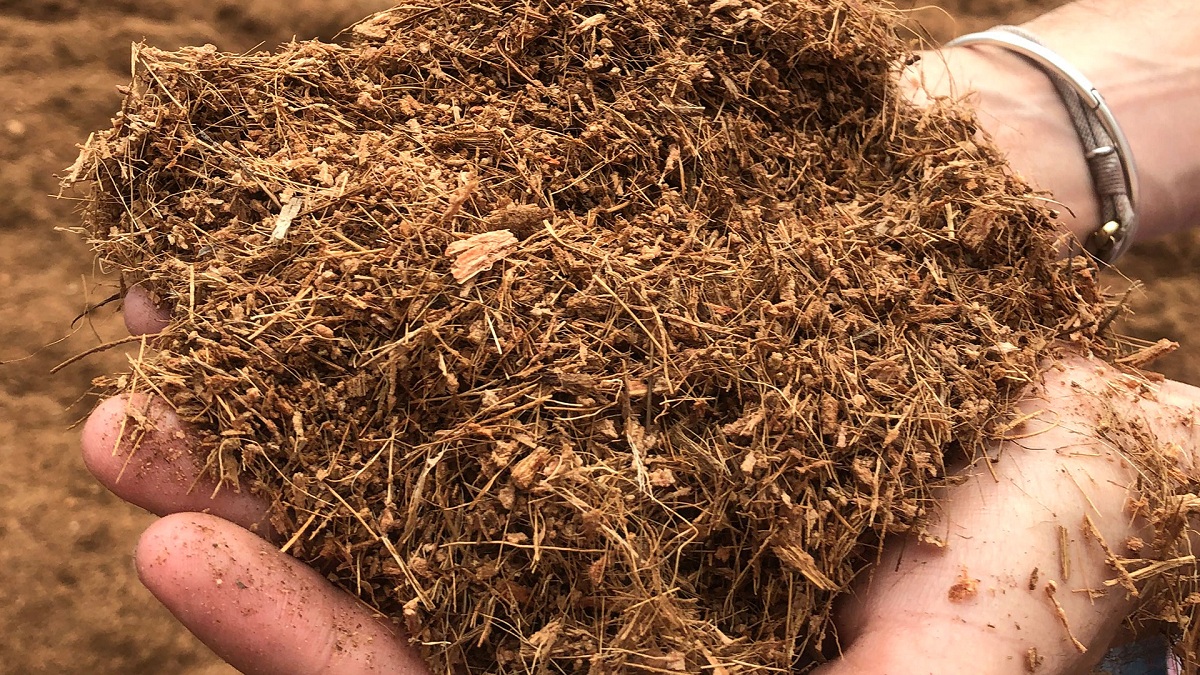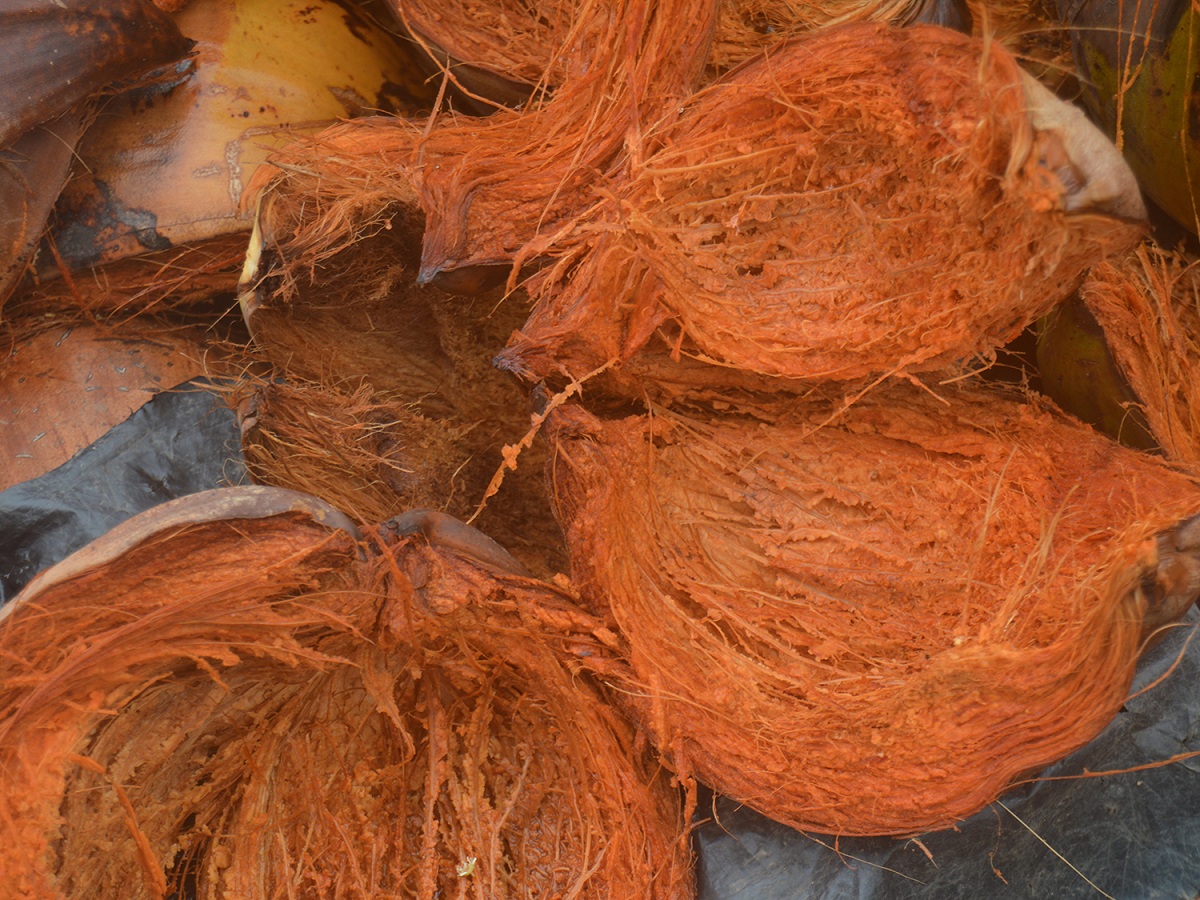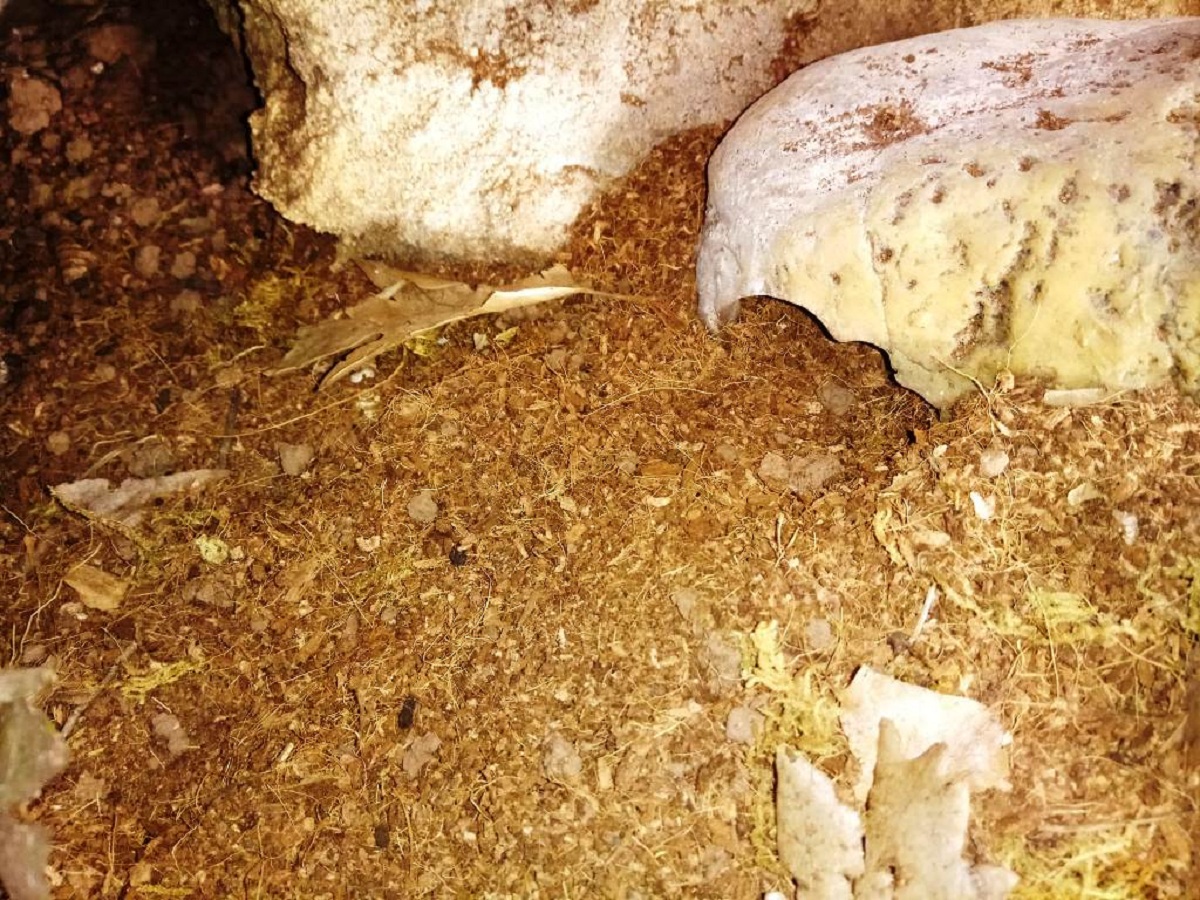
La coconut fiber It is one of the substrates that is becoming more fashionable lately. It is much lighter than peat, and also more ecological since a single coconut palm produces a large amount of fruit, which is where this interesting sustenance for your plants comes from. But what is it and how is it used? What properties does it have?
In this article we are going to tell you everything you need to know about coconut fiber and its properties.
What is coconut fiber?
This substrate is one of the most recommended for terrariums, seedbeds, palm trees, horticultural plants ... in short, for all types of plants, except for carnivorous ones (it could only do well with Nepenthes, and always mixed with blond peat). As its own indicates, it comes from the coconut, which is the fruit of the Cocos nucifera. Its properties are:
- PH between 5,5 and 6,2, which is suitable for most crops.
- It is capable of retaining nutrients and releasing them progressively. Plus, it helps avoid problems caused by over-fertilizing.
- Retains water; in fact, its fibers act as if it were a sponge, so you can save on irrigation water, something that always comes in handy? .
- Facilitates the development of the roots, as it can yield or absorb heat very quickly.
- Maintains the proper balance between water retention and aeration capacity, thus avoiding the problems derived from excess humidity.
If we talk about granulometry, it comes in three types: fine (which looks like normal earth), coarse (which are small pieces), and chip (somewhat larger pieces). In gardening, the fine is used above all, since it is the one that gives the best results in crops
Key features
It is a type of substrate that is perfect for use in seedbeds, terrariums, horticultural plants, palm trees and other types of plants. The only limitation that it has in its use is with carnivorous plants. By improving the development of the roots, it manages to maintain balance in order to have a better aeration and water retention capacity. This prevents the plant from having any type of problem in terms of excess moisture.
It is one of the richest substrates in nutrients that are assimilated by plants. Plants need nutrients that they can easily absorb and that provide what they need to thrive. It has a high proportion of vitamins A and C and trace elements. Among these trace elements we find vanadium and molybdenum. These two help nitrogen-fixing bacteria to be more active. Among other trace elements in a smaller proportion we find manganese, nickel, copper, sodium, titanium and lead.
How is coconut fiber used?

The substrate is one of the most recommended to have perfect plants. However, it is not usually used alone, since it does not have its own nutrients. Therefore, it must be mixed with organic fertilizers, such as worm humus, so that they can grow wonderfully. The ratio is 6: 4 (60% coconut fiber and 40% worm castings). With this mixture, you will obtain an ideal sustenance for your beloved pots.
Coconut fiber can be purchased at almost any specialty garden center. In places for agriculture and crops it can also be obtained. There are some people who make it at home to make it homemade. It can also be purchased from here.
Advantages of its use

Among the advantages that can be obtained from the use of coconut fiber in our plants we find a generalized benefit. It must be taken into account that coconut fiber cannot be used by itself as a substrate, since it does not have its own nutrients. Ideally, mix it with some type of organic substrate such as dot worm humus in this way, we get a quite nutritious mixture for our plants.
We are going to analyze one by one the advantages of using this substrate over others:
- Helps to enhance the production of flowers and fruits: since it has a great aeration power, we find a better environment for the correct development of the roots. Thanks to the coconut fiber, the soil also improves its general structure and facilitates the development and growth of the roots.
- Helps to have healthier and stronger plants: coconut fiber is a type of substrate that has an insulating character. To this we add its aeration capacity and we obtain a more extended protection of the roots against excess humidity. Almost any weakening that the roots may suffer at the cost of attacks by pests or fungi can be reduced with this substrate. Another advantage of this part is that it reduces heat to the roots with greater speed. In this way, we can auto or regulate the temperature of the garden plants in a natural way.
- Improve crops in a more sustainable way: by having less water losses we can optimize irrigation and, therefore, reduce the amount of water we use. This will help reduce the environmental impact by saving water and having a good management of this resource.
- Solves water stress problems in plants: plants are under water stress when summers are very hot. The problem with the irrigation system is that there are some parts where the plant suffers the most. This can affect the development of flowers and fruits. With the coconut fiber we will be able to avoid any kind of mistake when it comes to watering and that affects us so much. Thanks to the coconut fiber, the plant will have a rapid rehydration. One of the uses for which it has spread is that it can be used as a prophylaxis.
- Facilitates and provides the absorption of mineral salts and vitamins: not only provides vitamins but also helps you absorb them. When harvested from the seashore, coconut coir is loaded with minerals.
I hope that with this information to learn more about coconut fiber and all the beneficial properties for plants.
How about the combination of worm humus and coconut fiber for common potted plants and some fruit trees also in pot? Would a commercial universal substrate be a good mix or better?
Hi John.
That mix is excellent 🙂. I use it for young palms myself. Of course, do not put a lot of humus, maybe 70% coconut fiber and the rest hummus.
A greeting.
I would like to know where I can buy Coconut fiber and how to make a flowerpot
Hey.
You can buy coconut coir at any nursery or garden store. They also sell flowerpots right there.
If what you want to know is how to make a kokedama, in this article we explain it.
If you have any questions, feel free to ask 🙂.
A greeting.
Hello
You speak of limbriz humus, but how about mixing it with compost made in the same garden? And what would its usage rate be?
Another question, can it be used as Molch in your larger presentation?
Thank you
Hello Fabian.
Well even better. Compost has much more nutrients than vermicompost, something that horticultural plants do very well. The proportion would be the same, or you can even put the same coconut fiber as compost.
Regarding your last question, it can be used as mulch as long as the soil in the garden has an acidic pH (between 4 and 6), or if the soil wants to acidify. Coconut fiber is acidic, and if it is mixed with clay soil (pH 7), this pH will drop, which could be a problem for some plants (carob, almond, fig, etc.).
A greeting.
How would a mixture of coconut fiber and normal soil (from the field) with some worm humus, for cacti and succulents? If so, what would be the most correct proportions?
Your blog is excellent and very helpful for those of us who are trying to learn. Thank you for your work.
Hi Chesana.
The roots of cacti and succulents cannot absorb the nutrients from organic fertilizer, since in their natural habitat there is hardly any decomposing organic matter, and as the soil is mineral, they can only be fertilized with mineral fertilizers (Nitrofoska, for example).
The land of the field, well, I don't know what drainage it will have 🙂. If you fill a pot with it and water it, if you see that it takes no more than two seconds for all the water to filter, then it could work, but it has to be mixed with perlite or clay balls. Coconut fiber is very acidic to cacti and these types of plants.
A greeting and thanks for your words.
Can you get coconut fiber in bulk or by the yard or meter to cut it according to the size of pots you have?
Very good blog by the way.
Hi John.
We are glad that you like the blog. 🙂
Well I've been searching, and I've found esto. I don't know if it will help you.
If not, I recommend you look at Agroterra.com There they usually have quite a few interesting things.
A greeting.
They gave me an urban garden kit but I don't know how to use the coconut fiber brics
Hello Manuel.
When they are hard, the piece that you are going to need is cut with a serrated knife, soaked and then used to fertilize or to mix with the substrate.
A greeting.
Hello and I have been sending you all your comments are very good but my question is I have bonsai and I want to add that coconut fertilizer I can solve it with a brick substrate that I think it will be or it has to be added only and a little earthworm substrate that they tell me
Hi Milton.
For bonsai, substrates such as brick or akadama are better, since they allow the roots to have a good development.
Still, you can add a little coconut fiber (10-20% maximum) to the mixture to make it grow even better.
A greeting.
In the afternoon Monica, apart from coconut fiber and humus, you can also add vermiculite or perlite ??? and how much ??? I was thinking of adding just a handful, please get me out of that doubt. Thanks xD
Hello José Lozano.
I answer your questions in a message:
-Coconut fiber is very different from peat, as it has more nutrients (in fact, peat has hardly any). In addition, it absorbs and drains water better.
-Both vermiculite and perlite are two substrates that greatly facilitate water drainage (especially perlite), but if you use coconut fiber you don't need them.
Greetings.
Good afternoon, coconut fiber replaces peat ???
Good morning, I would like to know what kind of coconut fiber is used to make kokedamas, please, since I bought one, but it is a very small substrate.
Thank you very much
Hello Ariel.
There is only one coconut fiber, that is, there are no different types. This is so because it only comes from one type of plant, the coconut palm tree (Cocos nucifera).
In the video you can see how it is when it is dry, and then when it absorbs the water:
https://youtu.be/vSo8VnasTJU
Greetings.